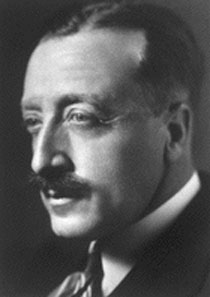<Back to Index>
- Biochemist John Howard Northrop, 1891
- Painter André Lhote, 1885
- Président de la République Française Georges Jean Raymond Pompidou, 1911

John Howard Northrop (July 5, 1891 – May 27, 1987) was an American biochemist who won, with James Batcheller Sumner and Wendell Meredith Stanley, the 1946 Nobel Prize in Chemistry. The award was given for these scientists' isolation, crystallization, and study of enzymes, proteins, and viruses.
Northrop was born in Yonkers, New York, to John I., a zoologist and instructor at Columbia University, and Alice R. Northrop, a teacher of botany at Hunter College. His father died in a lab explosion two weeks before John H. Northrop was born. The son was educated at Columbia University, where he earned his PhD in chemistry in 1915. During World War I, he conducted research for the U.S. Army Chemical Warfare Service on the production of acetone and ethanol through fermentation. This work led to studying enzymes.
In 1929, Northrop isolated and crystallized the gastric enzyme pepsin and determined that it was a protein. In 1938 he isolated and crystallized the first bacteriophage (a small virus that attacks bacteria), and determined that it was a nucleoprotein. Northrop also isolated and crystallized pepsinogen (the precursor to pepsin), trypsin, chymotrypsin, and carboxypeptidase.
His 1939 book, Crystalline Enzymes, was an important text. Northrop was employed by the Rockefeller Institute for Medical Research in New York City from 1916 to 1961, at which time he retired.
In 1917, Northrop married Louise Walker, with whom he had two children: John, an oceanographer, and Alice, who married Nobel laureate Frederick C. Robbins. Northrop committed suicide in Wickenberg, Arizona, in 1987.